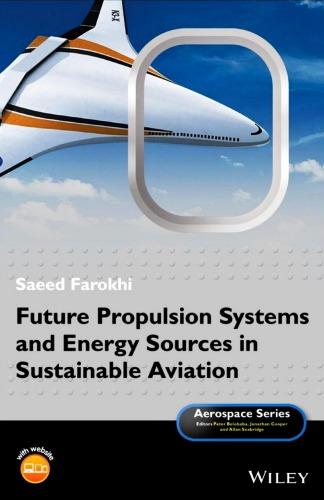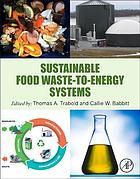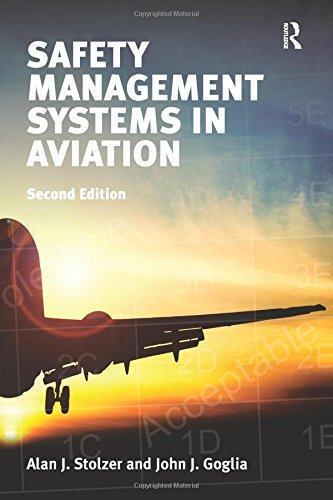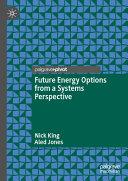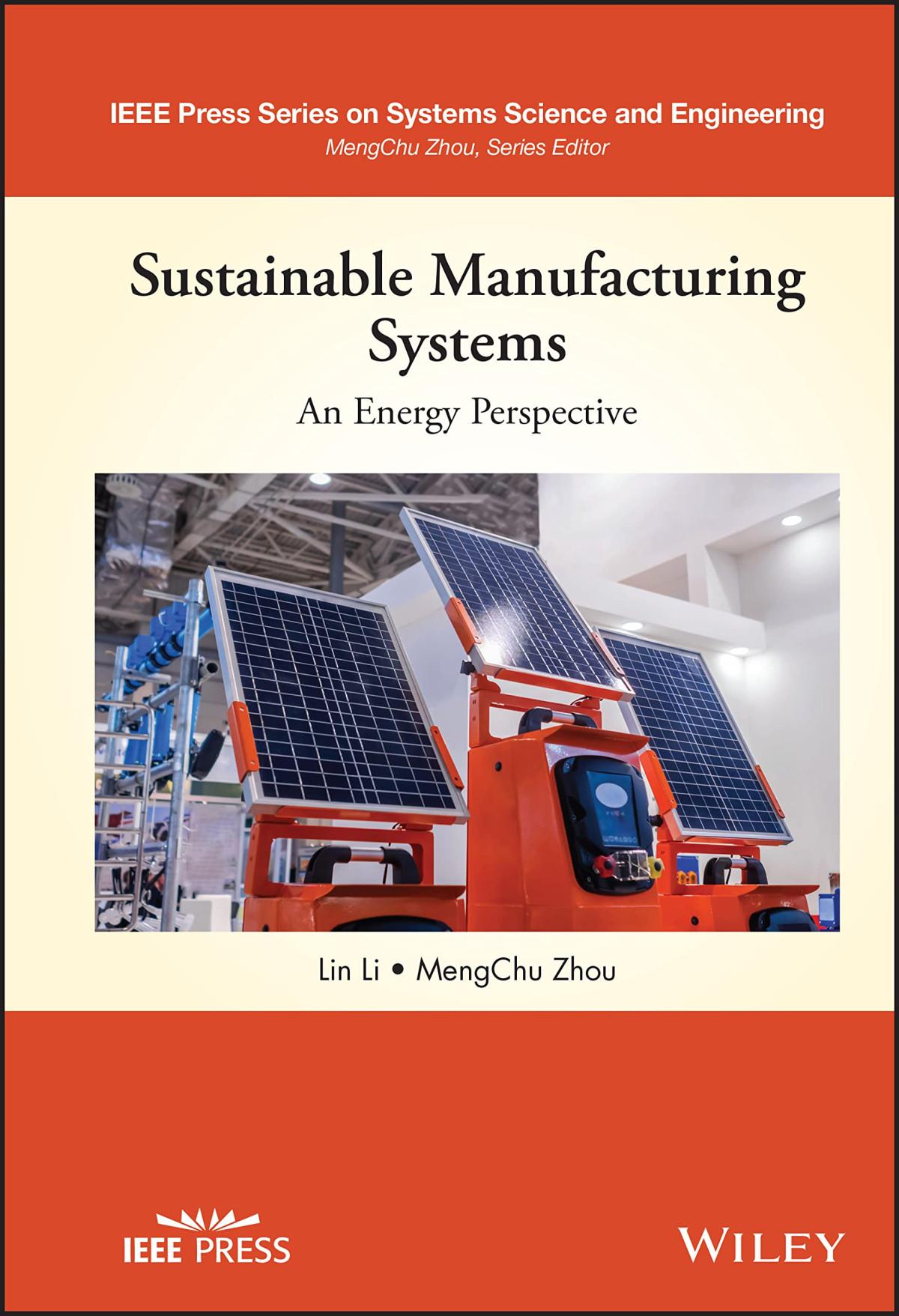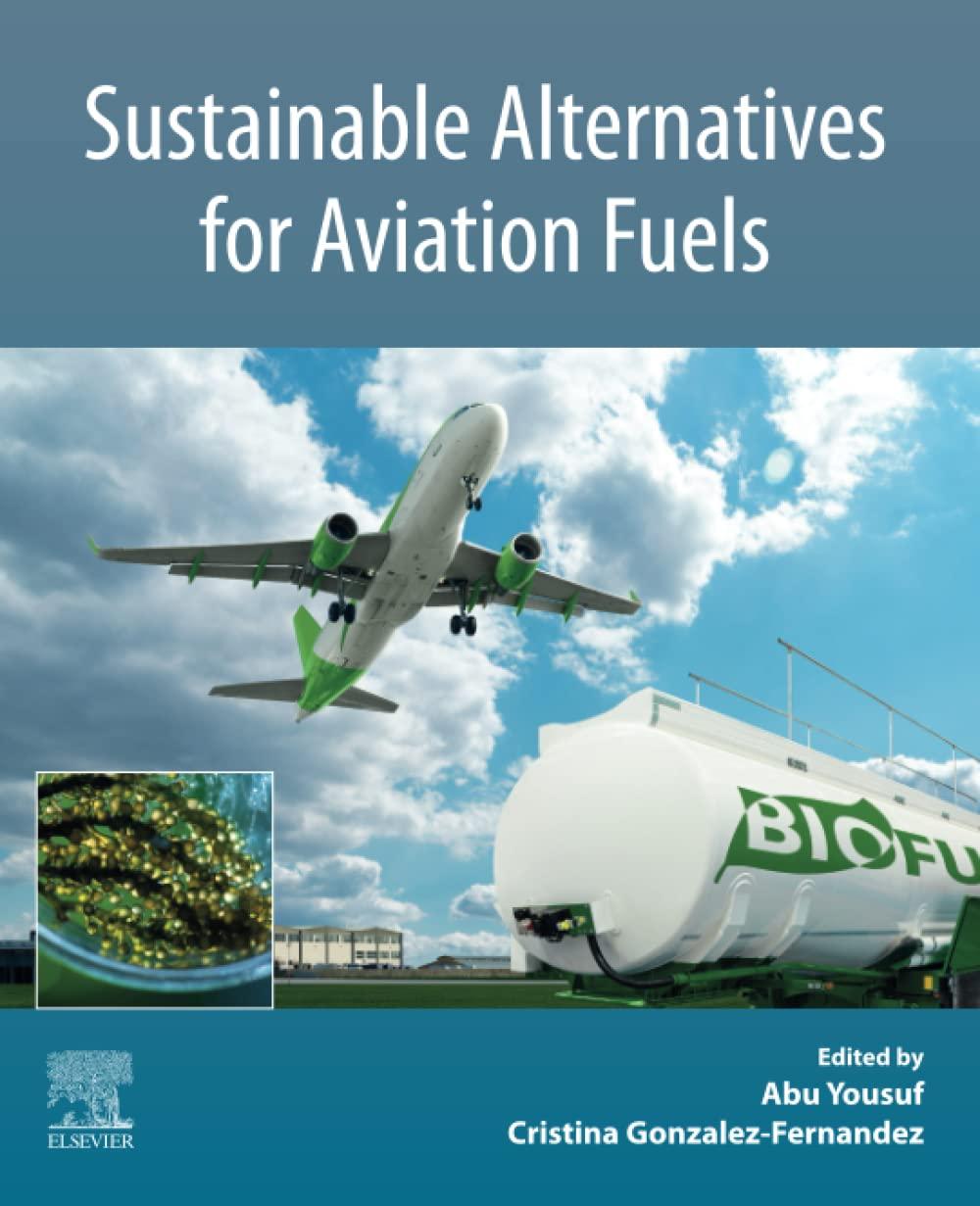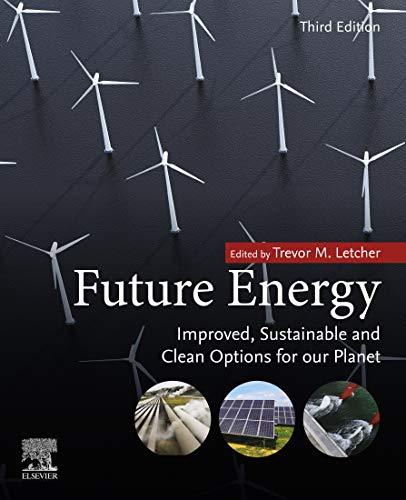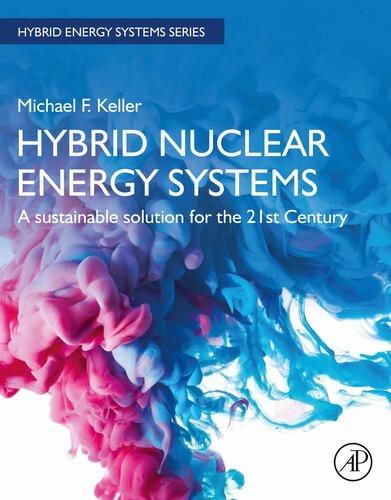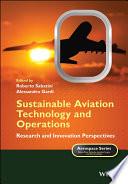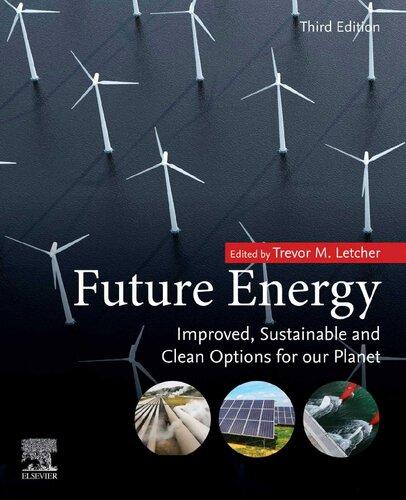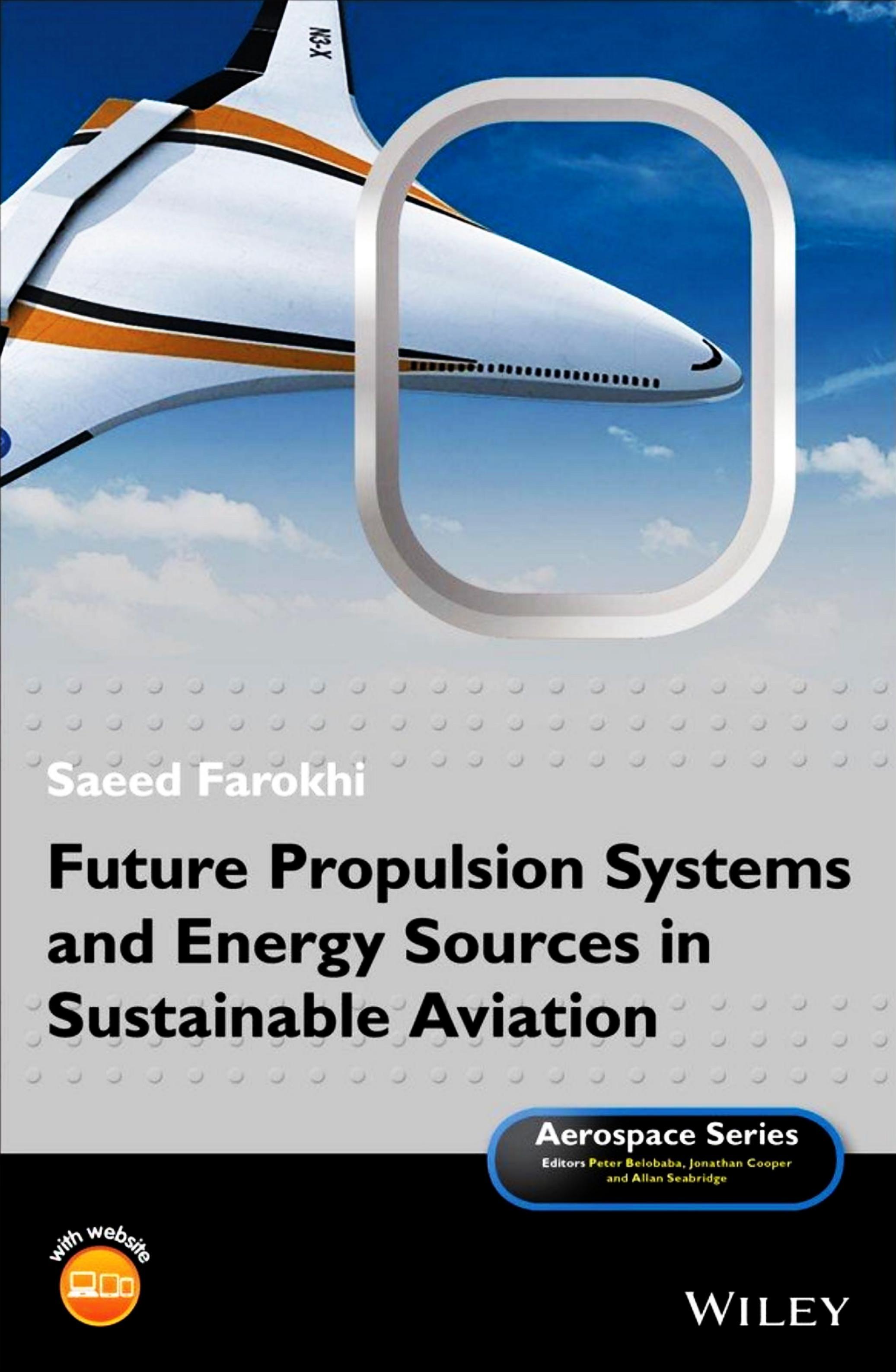Aerospace Series
Conceptual Aircraft Design: An Industrial Approach
Ajoy Kumar Kundu, Mark A. Price, David Riordan
Helicopter Flight Dynamics: Including a Treatment of Tiltrotor Aircraft, 3rd Edition
Gareth D. Padfield
Space Flight Dynamics, 2nd Edition
Craig A. Kluever
Performance of the Jet Transport Airplane: Analysis Methods, Flight Operations, and Regulations
Trevor M. Young
Small Unmanned Fixed‐Wing Aircraft Design: A Practical Approach
Andrew J. Keane, András Sóbester, James P. Scanlan
Advanced UAV Aerodynamics, Flight Stability and Control: Novel Concepts, Theory and Applications
Pascual Marqués, Andrea Da Ronch
Differential Game Theory with Applications to Missiles and Autonomous Systems Guidance
Farhan A. Faruqi
Introduction to Nonlinear Aeroelasticity
Grigorios Dimitriadis
Introduction to Aerospace Engineering with a Flight Test Perspective
Stephen Corda
Aircraft Control Allocation
Wayne Durham, Kenneth A. Bordignon, Roger Beck
Remotely Piloted Aircraft Systems: A Human Systems Integration Perspective
Nancy J. Cooke, Leah J. Rowe, Winston Bennett Jr., DeForest
Q. Joralmon
Theory and Practice of Aircraft Performance
Ajoy Kumar Kundu, Mark A. Price, David Riordan
Adaptive Aeroservoelastic Control
Ashish Tewari
The Global Airline Industry, 2nd Edition
Peter Belobaba, Amedeo Odoni, Cynthia Barnhart
Modeling the Effect of Damage in Composite Structures: Simplified Approaches
Christos Kassapoglou
Introduction to Aircraft Aeroelasticity and Loads, 2nd Edition
Jan R. Wright, Jonathan Edward Cooper
Theoretical and Computational Aerodynamics
Tapan K. Sengupta
Aircraft Aerodynamic Design: Geometry and Optimization
András Sóbester, Alexander I J Forrester
Stability and Control of Aircraft Systems: Introduction to Classical Feedback Control
Roy Langton
Aerospace Propulsion
T. W. Lee
Civil Avionics Systems, 2nd Edition
Ian Moir, Allan Seabridge, Malcolm Jukes
Aircraft Flight Dynamics and Control
Wayne Durham
Modelling and Managing Airport Performance
Konstantinos Zografos, Giovanni Andreatta, Amedeo Odoni
Advanced Aircraft Design: Conceptual Design, Analysis and Optimization of Subsonic Civil Airplanes
Egbert Torenbeek
Design and Analysis of Composite Structures: With Applications to Aerospace Structures, 2nd Edition
Christos Kassapoglou
Aircraft Systems Integration of Air‐Launched Weapons
Keith A. Rigby
Understanding Aerodynamics: Arguing from the Real Physics
Doug McLean
Design and Development of Aircraft Systems, 2nd Edition
Ian Moir, Allan Seabridge
Aircraft Design: A Systems Engineering Approach
Mohammad H. Sadraey
Introduction to UAV Systems, 4th Edition
Paul Fahlstrom, Thomas Gleason
Theory of Lift: Introductory Computational Aerodynamics in MATLAB/Octave
G. D. McBain
Sense and Avoid in UAS: Research and Applications
Plamen Angelov
Morphing Aerospace Vehicles and Structures
John Valasek
Spacecraft Systems Engineering, 4th Edition
Peter Fortescue, Graham Swinerd, John Stark
Unmanned Aircraft Systems: UAVS Design, Development and Deployment
Reg Austin
Gas Turbine Propulsion Systems
Bernie MacIsaac, Roy Langton
Aircraft Systems: Mechanical, Electrical, and Avionics
Subsystems Integration, 3rd Edition
Ian Moir, Allan Seabridge
Basic Helicopter Aerodynamics, 3rd Edition
John M. Seddon, Simon Newman
System Health Management: with Aerospace Applications
Stephen B Johnson, Thomas Gormley, Seth Kessler, Charles Mott, Ann Patterson‐Hine, Karl Reichard, Philip Scandura Jr.
Advanced Control of Aircraft, Spacecraft and Rockets
Ashish Tewari
Air Travel and Health: A Systems Perspective
Allan Seabridge, Shirley Morgan
Principles of Flight for Pilots
Peter J. Swatton
Handbook of Space Technology
Wilfried Ley, Klaus Wittmann, Willi Hallmann
Cooperative Path Planning of Unmanned Aerial Vehicles
Antonios Tsourdos, Brian White, Madhavan Shanmugavel
Design and Analysis of Composite Structures: With Applications to Aerospace Structures
Christos Kassapoglou
Introduction to Antenna Placement and Installation
Thereza Macnamara
Principles of Flight Simulation
David Allerton
Aircraft Fuel Systems
Roy Langton, Chuck Clark, Martin Hewitt, Lonnie Richards
Computational Modelling and Simulation of Aircraft and the Environment, Volume 1: Platform Kinematics and Synthetic Environment
Dominic J. Diston
Aircraft Performance Theory and Practice for Pilots, 2nd Edition
Peter J. Swatton
Military Avionics Systems
Ian Moir, Allan Seabridge, Malcolm Jukes
Aircraft Conceptual Design Synthesis
Denis Howe
Future
Propulsion Systems and Energy Sources in Sustainable Aviation
Saeed Farokhi
The University of Kansas Lawrence, Kansas USA
This edition first published 2020
© 2020 John Wiley & Sons Ltd
All rights reserved. No part of this publication may be reproduced, stored in a retrieval system, or transmitted, in any form or by any means, electronic, mechanical, photocopying, recording or otherwise, except as permitted by law. Advice on how to obtain permission to reuse material from this title is available at http://www.wiley.com/go/permissions.
The right of Saeed Farokhi to be identified as the author of this work has been asserted in accordance with law.
Registered Offices
John Wiley & Sons, Inc., 111 River Street, Hoboken, NJ 07030, USA
John Wiley & Sons Ltd, The Atrium, Southern Gate, Chichester, West Sussex, PO19 8SQ, UK
Editorial Office
The Atrium, Southern Gate, Chichester, West Sussex, PO19 8SQ, UK
For details of our global editorial offices, customer services, and more information about Wiley products visit us at www.wiley.com.
Wiley also publishes its books in a variety of electronic formats and by print‐on‐demand. Some content that appears in standard print versions of this book may not be available in other formats.
Limit of Liability/Disclaimer of Warranty
While the publisher and authors have used their best efforts in preparing this work, they make no representations or warranties with respect to the accuracy or completeness of the contents of this work and specifically disclaim all warranties, including without limitation any implied warranties of merchantability or fitness for a particular purpose. No warranty may be created or extended by sales representatives, written sales materials or promotional statements for this work. The fact that an organization, website, or product is referred to in this work as a citation and/or potential source of further information does not mean that the publisher and authors endorse the information or services the organization, website, or product may provide or recommendations it may make. This work is sold with the understanding that the publisher is not engaged in rendering professional services. The advice and strategies contained herein may not be suitable for your situation. You should consult with a specialist where appropriate. Further, readers should be aware that websites listed in this work may have changed or disappeared between when this work was written and when it is read. Neither the publisher nor authors shall be liable for any loss of profit or any other commercial damages, including but not limited to special, incidental, consequential, or other damages.
Library of Congress
Cataloging‐in‐Publication Data
Names: Farokhi, Saeed, author.
Title: Future propulsion systems and energy sources in sustainable aviation / Saeed Farokhi, PhD, FRAeS, Chancellor’s Club Teaching Professor & Professor of Aerospace Engineering, The University of Kansas, Lawrence, Kansas, USA.
Description: First edition. | Hoboken, NJ : John Wiley & Son, Inc., 2020. | Series: Aerospace series | Includes bibliographical references and index.
Identifiers: LCCN 2019024989 (print) | LCCN 2019024990 (ebook) | ISBN 9781119414995 (hardback) | ISBN 9781119414988 (adobe pdf) | ISBN 9781119415053 (epub)
Subjects: LCSH: Airplanes–Motors. | Airplanes–Fuel. | Electric airplanes. | Aeronatics–Environmental aspects. | Sustainable engineering.
Classification: LCC TL701 .F34 2020 (print) | LCC TL701 (ebook) | DDC 629.134/35–dc23
LC record available at https://lccn.loc.gov/2019024989
LC ebook record available at https://lccn.loc.gov/2019024990
Cover Design: Wiley
Cover Image: © NASA
Set in 10/12pt Warnock by SPi Global, Pondicherry, India
To my lovely grandchildren: Sophia, Sasha, Sydney, Melody, and Shiley
Contents
Preface xiii
Acknowledgments xvii
Abbreviations and Acronyms xix
About the Companion Website xxvii
1 Aircraft Engines – A Review 1
1.1 Introduction 1
1.2 Aerothermodynamics of Working Fluid 1
1.2.1 Isentropic Process and Isentropic Flow 6
1.2.2 Conser vation of Mass 6
1.2.3 Conser vation of Linear Momentum 7
1.2.4 Conser vation of Angular Momentum 7
1.2.5 Conser vation of Energy 8
1.2.6 Speed of Sound and Mach Number 10
1.2.7 Stagnation State 11
1.3 Thrust and Specific Fuel Consumption 12
1.3.1 Takeoff Thrust 16
1.3.2 Installed Thrust – Some Bookkeeping Issues on Thrust and Drag 16
1.3.3 Air‐Breathing Engine Performance Parameters 18
1.3.3.1 Specific Thrust 18
1.3.3.2 Specific Fuel Consumption and Specific Impulse 19
1.4 Thermal and Propulsive Efficiency 20
1.4.1 Thermal Efficiency 20
1.4.2 Propulsive Efficiency 22
1.4.3 Engine O verall Efficiency and Its Impact on Aircraft Range and Endurance 24
1.5 Gas Generator 27
1.6 Engine Components 28
1.6.1 The Inlet 28
1.6.2 The Nozzle 30
1.6.3 The Compressor 36
1.6.4 The Combustor 40
1.6.5 The Turbine 44
1.7 Performance Evaluation of a Turbojet Engine 52
1.8 Turbojet Engine with an Afterburner 54
1.8.1 Introduction 54
1.8.2 Analysis 56
1.9 Turbofan Engine 59
1.9.1 Introduction 59
1.9.2 Analysis of a Separate‐Exhaust Turbofan Engine 60
1.9.3 Thermal Efficiency of a Turbofan Engine 64
1.9.4 Propulsive Efficiency of a Turbofan Engine 65
1.9.5 Ultra‐High Bypass (UHB) Geared Turbofan Engines 69
1.9.6 Analysis of Mixed‐Exhaust Turbofan Engines with Afterburners 73
1.9.6.1 Mixer 74
1.9.6.2 Mixed‐Turbofan Cycle Analysis 76
1.9.6.3 Solution Procedure 77
1.10 Turboprop Engine 84
1.10.1 Introduction 84
1.10.2 Turboprop Cycle Analysis 85
1.10.2.1 The Ne w Parameters 85
1.10.2.2 Design‐Point Analysis 86
1.10.2.3 Optimum Power Split between the Propeller and the Jet 90
1.10.2.4 Advanced Propeller: Prop‐Fan 94
1.11 High‐Speed Air‐Breathing Engines 95
1.11.1 Supersonic Combustion Ramjet 99
1.11.1.1 Inlet Analysis 99
1.11.1.2 Scramjet Combustor 101
1.11.1.3 Scramjet Nozzle 103
1.12 Rocket‐Based Airbreathing Propulsion 103 1.13 Summary 104
References 105
2 Aircraft Aerodynamics – A Review 109
2.1 Introduction 109
2.2 Similarity Parameters in Compressible Flow: Flight vs. Wind Tunnel 111
2.3 Physical Boundary Conditions on a Solid Wall (in Continuum Mechanics) 113
2.4 Profile and Parasite Drag 115
2.4.1 Boundary Layers 115
2.4.1.1 Case 1: Incompressible Laminar Flow 116
2.4.1.2 Case 2: Laminar Compressible Boundary Layers 125
2.4.1.3 Case 3: Turbulent Boundary Layers 129
2.4.1.4 Case 4: Transition 132
2.4.2 Profile Drag of an Airfoil 135
2.5 Drag Due to Lift 141
2.5.1 Classical Theory 141
2.5.2 Optimal Spanloading: The Case of Bell Spanload 147
2.6 Waves in Supersonic Flow 150
2.6.1 Speed of Sound 150
2.6.2 Normal Shock Wave 152
2.6.3 Oblique Shock Waves 152
2.6.4 Expansion Waves 155
2.7 Compressibility Effects and Critical Mach Number 157
2.8 Drag Divergence Phenomenon and Supercritical Airfoil 161
2.9 Wing Sweep 163
2.10 Delta Wing Aerodynamics 166
2.10.1 Vortex Breakdown 167
2.11 Area‐Rule in Transonic Aircraft 169
2.12 Optimum Shape for Slender Body of Revolution of Length ℓ in Supersonic Flow 171
2.12.1 Sears‐Haack Body 174
2.12.2 Von Karman Ogive of Length ℓ and Base Area, S(ℓ), for Minimum Axisymmetric Nose Wave Drag 175
2.13 High‐Lift Devices: Multi‐Element Airfoils 175
2.14 Powered Lift and STOL Aircraft 179
2.15 Laminar Flow Control, LFC 180
2.16 Aerodynamic Figures of Merit 182
2.17 Advanced Aircraft Designs and Technologies for Leaner, Greener Aviation 188
2.18 Summary 194 References 195
3 Understanding Aviation’s Impact on the Environment 201
3.1 Introduction 201
3.2 Combustion Emissions 202
3.2.1 Greenhouse Gases 202
3.2.2 Carbon Monoxide, CO, and Unburned Hydrocarbons, UHC 205
3.2.3 Oxides of Nitrogen, NOx 208
3.2.4 Impact of NO on Ozone in Lower and Upper Atmosphere 209
3.2.4.1 Lower Atmosphere 209
3.2.4.2 Upper Atmosphere 211
3.2.5 Impact of NOx Emissions on Surface Air Quality 213
3.2.6 Soot/Smoke and Particulate Matter (PM) 214
3.2.7 Contrails, Cirrus Clouds, and Impact on Climate 215
3.3 Engine Emission Standards 215
3.4 Low‐Emission Combustors 216
3.5 Aviation Fuels 219
3.6 Interim Summary on Combustion Emission Impact on the Environment 225
3.7 Aviation Impact on Carbon Dioxide Emission: Quantified 227
3.8 Noise 232
3.8.1 Introduction 232
3.8.1.1 General Discussion 232
3.8.1.2 Sound Intensity 236
3.8.1.3 Acoustic Power 236
3.8.1.4 Le vels and Decibels 237
3.8.1.5 Sound Power Level in Decibels, dB 237
3.8.1.6 Sound Intensity Level in Decibels, dB 237
3.8.1.7 Sound Pressure Level in Decibels, dB 237
3.8.1.8 Multiple Sources 237
3.8.1.9 Overall Sound Pressure Level in Decibels, dB 238
3.8.1.10 Octave Band, One‐Third Octave Band, and Tunable Filters 238
3.8.1.11 Adding and Subtracting Noise Sources 239
3.8.1.12 Weighting 239
3.8.1.13 Effective Perceived Noise Level (EPNL), dB, and Other Metrics 240
3.8.1.14 Pulsating Sphere: Model of a Monopole 241
3.8.1.15 Two Monopoles: Model of a Dipole 242
3.8.1.16 Two Dipoles: Model of Quadrupole 243
3.8.2 Sources of Noise Near Airports 244
3.8.3 Engine Noise 245
3.8.4 Subsonic Jet Noise 249
3.8.5 Supersonic Jet Noise 251
3.9 Engine Noise Directivity Pattern 253
3.10 Noise Reduction at the Source 256
3.10.1 Wing Shielding 256
3.10.2 Fan Noise Reduction 256
3.10.3 Subsonic Jet Noise Mitigation 260
3.10.3.1 Che vron Nozzle 260
3.10.3.2 Acoustic Liner in Exhaust Core 261
3.10.4 Supersonic Jet Noise Reduction 262
3.11 Sonic Boom 263
3.12 Aircraft Noise Certification 268
3.13 NASA’s Vision: Quiet Green Transport Technology 272
3.14 FAA’s Vision: NextGen Technology 273
3.15 The European Vision for Sustainable Aviation 274
3.16 Summary 275 References 276
4 Future Fuels and Energy Sources in Sustainable Aviation 283
4.1 Introduction 283
4.2 Alternative Jet Fuels (AJFs) 288
4.2.1 Choice of Feedstock 291
4.2.2 Conversion Pathways to Jet Fuel 292
4.2.3 AJF Evaluation and Certification/Qualification 293
4.2.4 Impact of Biofuel on Emissions 294
4.2.5 Advanced Biofuel Production 296
4.2.6 Lifecycle Assessment of Bio‐Based Aviation Fuel 303
4.2.7 Conversion of Bio‐Crops to Electricity 305
4.3 Liquefied Natural Gas, LNG 305
4.3.1 Composition of Natural Gas and LNG 307
4.4 Hydrogen 308
4.4.1 Hydrogen Production 310
4.4.2 Hydrogen Delivery and Storage 312
4.4.3 Gravimetric and Volumetric Energy Density and Liquid Fuel Cost 312
4.5 Battery Systems 312
4.5.1 Battery Energy Density 314
4.5.2 Open‐Cycle Battery Systems 315
4.5.3 Charging Batteries in Flight: Two Examples 316
4.5.4 All‐Electric Aircraft: Voltair Concept Platform 316
4.6 Fuel Cell 318
4.7 Fuels for the Compact Fusion Reactor (CFR) 320
4.8 Summary 321 References 322
5 Promising Technologies in Propulsion and Power 325
5.1 Introduction 325
5.2 Gas Turbine Engine 326
5.2.1 Brayton Cycle: Simple Gas Turbine Engine 326
5.2.2 Turbofan Engine 327
5.3 Distributed Combustion Concepts in Advanced Gas Turbine Engine Core 330
5.4 Multifuel (Cryogenic‐Kerosene), Hybrid Propulsion Concept 335
5.5 Intercooled and Recuperated Turbofan Engines 335
5.6 Active Core Concepts 340
5.7 Topping Cycle: Wave Rotor Combustion 340
5.8 Pulse Detonation Engine (PDE) 351
5.9 Humphrey Cycle vs. Brayton: Thermodynamics 351
5.9.1 Idealized Laboratory PDE: Thrust Tube 353
5.9.2 Pulse Detonation Ramjets 355
5.9.3 Turbofan Engine with PDE 356
5.9.4 Pulse Detonation Rocket Engine (PDRE) 357
5.9.5 Vehicle‐Level Performance Evaluation of PDE 358
5.10 Boundary‐Layer Ingestion (BLI) and Distributed Propulsion (DP) Concept 358
5.10.1 Aircraft Drag Reduction Through BLI 360
5.10.2 Aircraft Noise Reduction: Advanced Concepts 362
5.10.3 Multidisciplinary Design Optimization (MDO) of a BWB Aircraft with BLI 365
5.11 Distributed Propulsion Concept in Early Aviation 367
5.12 Distributed Propulsion in Modern Aviation 368
5.12.1 Optimal Number of Propulsors in Distributed Propulsion 371
5.12.2 Optimal Propulsor Types in Distributed Propulsion 372
5.13 Interim Summary on Electric Propulsion (EP) 384
5.14 Synergetic Air‐Breathing Rocket Engine; SABRE 386
5.15 Compact Fusion Reactor: The Path to Clean, Unlimited Energy 388
5.16 Aircraft Configurations Using Advanced Propulsion Systems 389
5.17 Summary 395 References 396
6 Pathways to Sustainable Aviation 403
6.1 Introduction 403
6.2 Pathways to Certification 403
6.3 Energ y Pathways in Sustainable Aviation 405
6.4 Future of GT Engines 407
6.5 Summary 409 References 410 Index 411
Preface
Sustainable aviation in broad terms means environmentally friendly air travel. This term implies that our current ways are neither sustainable nor environmentally friendly. Fossil‐fuel burning turbofan engines produce greenhouse gases, among other pollutants such as NOx that contribute to the rising temperature on the Earth that is called global warming. Hence, NASA (National Aeronautics and Space Administration) and the European Union’s Advisory Council for Aeronautics Research in Europe (ACARE) work with the aerospace industry and academia to seek alternative solutions to the current state of the art (SOA) in commercial air travel. The solutions by necessity are system‐driven, composed of propulsion and power, airframe, and system integration, air travel management (ATM) and operations. The solutions to the propulsion and power components of sustainable aviation are found in the following:
● Fuel burn reduction in advanced‐core ultra‐high bypass (UHB) turbofan engines
● Open rotor architecture
● Alternative jet fuels from renewable sources
● Hybrid‐electric propulsion system
● Electric propulsion (EP) with superconducting motors/generators, electric power transmission, energy storage, and the cryogenic thermal management system
● Nuclear propulsion through advancements in the next‐generation of compact fusion reactor (CFR)
For airframe and system integration components, sustainable aviation is achieved through:
● High lift‐to‐drag ratio (L/D) airplane configurations, e.g. hybrid wing–body (HWB) aircraft
● Fully integrated airframe and propulsion system through distributed propulsion (DP) concept
● Boundary layer ingesting (BLI) propulsion system and integration
● Other drag reduction concepts, e.g. hybrid laminar flow control (HLFC), folding high aspect ratio wings or fluidic actuators
When we consider flight navigation and operations, the roadmap to sustainable aviation is described in the Federal Aviation Administration’s (FAA) vision, called NextGen program. The goal is to develop and implement clean, quiet, and energy efficient operational procedure through the following:
1) Advanced ATM capabilities
2) Gate‐to‐gate and surface operational procedures
As we expect from a highly integrated system, it takes all three areas of propulsion and power systems, airframe configuration, and operations to achieve the lofty environmental goals that are set for commercial aviation. The advanced concepts in propulsion and power and the airframe contribute roughly 35–45% to sustainable aviation goals, whereas ATM and operations contribute roughly 15–20%.
Another aviation area of concern is noise pollution. Airport’s neighboring communities are subject to severe restrictions on noise emissions from aircraft takeoff and landing, ground operations, and noise pollution due to airport support vehicles and services. The noise mitigation strategies in sustainable aviation are focused on eight factors:
1) Airframe noise reduction through BLI propulsion system and control
2) Landing gear, flaps, and slat noise mitigation in the landing−takeoff (LTO) cycle
3) Fan noise reduction through lower pressure ratio design and higher bypass ratio engines
4) Jet noise mitigation through lower‐speed jets, Chevrons, and other means to enhance jet mixing as well as shielding by the airframe
5) Power management and steep flight path angle in takeoff and landing
6) Engine noise mitigation through advanced design in swept‐leaned stators in the fan exit duct, advanced acoustic liners, and flow path optimization
7) Gate and surface support operations
8) Airport traffic management
This book addresses sustainable aviation concepts and their subsequent promising technologies. It is intended as a resource for students and practicing engineers in aerospace industry. To be useful and self‐contained, I start with a review chapter on aircraft propulsion (Chapter 1), followed by a review chapter on aircraft aerodynamics (Chapter 2). These chapters lay the foundation for the theory, terminology, and science of propulsion and fluid flow. The next four chapters address the essence of sustainable aviation, namely:
● Chapter 3: Understanding Aviation’s Impact on the Environment
● Chapter 4: Future Fuels and Energy Sources in Sustainable Aviation
● Chapter 5: Promising Technologies in Propulsion and Power
● Chapter 6: Pathways to Sustainable Aviation
The presentation of the environmental impact of aviation is focused on the science of combustion, radiation physics with respect to greenhouse gases, NOx formation and the ozone layer, contrail formation, aviation‐induced cloudiness (AIC), and radiative forcing (RF). The issues of air‐quality standards and public health and safety are treated as universal concerns. Intentionally, the discussions are more focused on the scientific results and measurements and less on the debate of anthropogenic influences on climate or interference in global warming. We leave that debate, if there is one, to politicians. In this book, we identify the facts of aviation‐related pollution and how we should, as citizen engineers and scientists, help responsibly reduce or eliminate this pollution, by design. The responsibility is especially acute in light of the growth in air travel, namely from 2.5 billion passengers in 2011 to the estimated 16 billion in 2050.
Since the title of the book uses the word Future, I could not limit the presentation in this book to the aircraft that currently fly the commercial aviation routes, i.e.
Preface xv
subsonic‐transonic aircraft. At higher speeds, namely supersonic and hypersonic, we briefly address the low‐boom supersonic flight technology as well as some promising propulsion systems for the runway‐to‐orbit or the single‐stage to orbit (SSTO) commercial transport of the future.
Finally, the areas of technology that are presented here are rapidly evolving with new milestones and achievements, e.g. through laboratory and flight tests that appear almost on a monthly (if not weekly) basis in trade journals. The reader is thus encouraged to follow these technological advances and keep up with the current literature. This is certainly an exciting era in aviation.
Acknowledgments
I express my sincere appreciation to my professors at the University of Illinois at Urbana–Champaign and MIT Aeronautics and Astronautics Department. Their guidance and inspiration taught me the principles of thermal‐fluid sciences and the curiosity to ask questions and push the boundaries. I owe my desire to learn and confidence to my teachers who are still my role models. Working in the gas turbine division of Brown, Boveri & Co. (in Switzerland) taught me the appreciation for the engineering design and manufacturing of complex systems. I learned hardware engineering in industry, for which I am grateful.
Since joining the Aerospace Engineering Department at the University of Kansas in 1984, I have received continuous support from my friends and colleagues in the department and have supervised the research of more than 50 of the most dedicated graduate students in aerospace engineering. In particular, I am grateful to my PhD students who stayed for many years and helped us reach a better understanding of our field. My research sponsors from the government and industry shared the same vision and curiosity and funded our work at KU for over 30 years. The research sponsors are truly the lifeblood of US graduate education. I express my gratitude to all of them.
Finally, my heartfelt appreciation and gratitude goes to my wife, Mariam, who has been a true supporter for over 40 years. Our lovely daughters and grandchildren have been the real inspiration for this work.
Abbreviations and Acronyms
A
ACARE Advisory Council for Aeronautics Research in Europe
ACTE adaptive compliant trailing edge
ADP aerodynamic design point
AFRL Air Force Research Laboratory
AIA Aerospace Industry Association
AIAA American Institute of Aeronautics and Astronautics
AIC aviation‐induced cloudiness
AHEAD Advanced Hybrid Engines for Aircraft Development
AJF alternative jet fuel
AoA angle of attack
APU auxiliary power unit
AR aspect ratio
ASME American Society of Mechanical Engineers
ASTM American Society for Testing and Materials
ATM air traffic management
ATP advanced turboprop
ATRA advanced technology research aircraft
B
BBSAN broadband shock‐associated noise
BF block fuel
BFL balanced field length
BLC boundary layer control
BLI boundary layer ingestion
BPF blade passing frequency
BPR bypass ratio
BTH biomass to hydrogen
BTL biomass to liquid
BWB blended wing body
Abbreviations and Acronyms
C
CAAFI (US) Commercial Aviation Alternative Fuels Initiative
CAEP Committee on Aviation Environmental Protection
CC circulation control
CCD climb‐cruise‐descent
CD convergent‐divergent
CFC chlorofluorocarbons
CFD computational fluid dynamics
CFR compact fusion reactor
CJ Chapman‐Jouguet
CLEEN continuous lower emissions, energy and noise
CNEL community noise equivalent level
CNG compressed natural gas
CO carbon monoxide
CPS cycles per second (Hz)
CROR counter‐rotating open rotor
CSP concentrating solar power
CTL coal to liquid
D
DD drag divergence
DLR Deutsche Luft und Raumfahrt
DME` Dimethyl Ether
DNL day‐night level (24‐hour average sound level)
DOC direct operating cost
DOE Department of Energy
DOF degrees of freedom
DOT Department of Transportation
DP distributed propulsion
D‐T deuterium‐tritium
DTPD dry ton per day
E
EBF externally blown flap
ECS environmental control system
EEA European Environment Agency
EI emission index
EIA Energ y Information Administration
EIS entr y into service
EP electric propulsion
EPA Environmental Protection Agency
EPNL effective perceived noise level
ERA environmentally responsible aviation
ERA environmentally responsible aviation
Abbreviations and Acronyms xxi
ESTOL extreme short takeoff and landing
ETOPS extended range twin operations
eVTOL electric vertical takeoff and landing
F
FAA Federal Aviation Administration
FAR Federal Aviation Regulation
FPR fan pressure ratio
FRL fuel readiness level
FT Fischer‐Tropsch
FTL Fischer‐Tropsch liquid
G
GA general aviation
GAO Government Accounting Office
GED gravimetric energy density
GHG greenhouse gas
GIS geographic information systems
GREET greenhouse gases, regulated emissions, and energy use in transportation
GRC Glenn Research Center
GT gas turbine
GTF geared turbofan
GTL gas to liquid
GTOW gross takeoff weight
H
HEFA Hydro‐processed esters and fatty acids
HEPS hybrid electric propulsion system
HFC hydrofluorocarbons
HHV higher heating value
HLFC hybrid laminar flow control
HPC high‐pressure compressor
HPT high‐pressure turbine
HRD hydro‐processed renewable diesel
HRJ hydro‐processed renewable jet
HSCT high‐speed civil transport
HTS high‐temperature superconductivity
HVO hydro‐treated vegetable oil
HWB hybrid wing body
I
IATA International Air Transport Association
IBF internally blown flap
Abbreviations and Acronyms
ICAO International Civil Aviation Organization
IFR instrument flight rules
IFSD in‐flight shutdown
IPC intermediate‐pressure compressor
IPCC Intergovernmental Panel on Climate Change
IR infrared
ISA International Standard Atmosphere
K
KPP ke y performance parameter
K‐T Kármán‐Tsien
KTAS knots true airspeed
L
LAA Lighthill’s acoustic analogy
LBL laminar boundary layer
LCA life c ycle assessment
LCC life c ycle cost
LDAL low‐drag acoustic liner
LE leading edge
LEAPTech Leading‐Edge Asynchronous Propellers Technology
LED leading edge device
LES large‐eddy simulation
LFC laminar f low control
LFG landfill gas
LH2 liquid hydrogen
LHV lower heating value
LM Lockheed Martin
LNG liquefied natural gas
LOX liquid oxygen
LPC low‐pressure compressor
LPT low‐pressure turbine
LRC long‐range cruise
LST linear stability theory
LTO landing–takeoff
LUC land use change
M
MCFC molten carbonate fuel cell
MCL mean camber line
MDO multidisciplinary design optimization
MFCC multifunctional fuel cell
MIL‐STD militar y standard
MIT Massachusetts Institute of Technology
Abbreviations and Acronyms
MNE mixed‐nozzle ejector
MTF mid‐tandem fan
MTOGW maximum takeoff gross weight
NAAQS National Ambient Air Quality Standards
NACA National Advisory Council for Aeronautics
NAS/NAE National Academy of Science/National Academy of Engineering
NASA National Aeronautics and Space Administration
NEF noise exposure forecast
NLF natural laminar flow
NOAA National Oceanic and Atmospheric Administration
NOx nitrogen oxides
NPR noz zle pressure ratio
NPF net propulsion force
NPSS numerical propulsion system simulation
NREL National Renewable Energy Laboratory
OEI one engine inoperative
OEW operating empty weight
OPR overall pressure ratio
OSHA Occupational Safety and Health Administration
PARTNER Partnership for Air Transportation Noise and Emissions Reduction
PDE pulse detonation engine
PDR pulse detonation ramjet
PDRE pulse detonation rocket engine
PEM proton exchange membrane
PFC perfluorocarbons
P‐G Prandtl‐Glauert
PM particulate matter
PPM parts per million
PR pressure ratio
PT power turbine
PV photovoltaic
R
RBAP rocket‐based airbreathing propulsion
RBCC rocket‐based combined cycle
RCEP Royal Commission on Environmental Protection (UK)
RES rene wable energy sources
Abbreviations and Acronyms
RF radiative forcing
RTO rolling takeoff
S
SABRE Synergetic Air‐Breathing Rocket Engine
SAE Society of Automotive Engineers
SAF sustainable aviation fuel
SBJ supersonic business jet
SC supercritical
SC superconductivity
SCEPTOR Scalable Convergent Electric Propulsion Technology and Operations Research
SESAR Single European Sky ATM Research
SEL sound exposure level
SFC specific fuel consumption
SLFC supersonic laminar flow control
SMR steam methane reforming
SN smoke number
SOA state of the art
SOFC solid‐oxide fuel cell
SPL sound pressure level
SSL standard sea level
SSTO single‐stage to orbit
STJ sugar‐to‐jet
STOL short takeoff and landing
SUGAR Subsonic Ultra‐Green Aircraft Research
SWAFEA (Europe) Sustainable Way for Alternative Fuel and Energy in Aviation
T
TBL turbulent boundary layer
TE trailing edge
TE A techno‐economic analysis
TET turbine entry temperature
TeDP turboelectric distributed propulsion
TF turbofan
TJ turbojet
TME total mission energy
TOC top of climb
TOGW takeoff gross weight
TP turboprop
TRJ turbo‐ramjet
TRL technology readiness level
TS Tollmien‐Schlichting
TSFC thrust‐specific fuel consumption
TTR total temperature ratio
Abbreviations and Acronyms
TTW tank‐to‐wake
TT W tank‐to‐wheel (surface vehicle)
U
UAM urban air mobility
UDF unducted fan
UHB ultra‐high bypass
UHC unburned hydrocarbon
USAF US Air Force
USB upper surface blowing
UTC United Technologies Corporation
UV ultraviolet V
VB vortex breakdown
VCE variable‐cycle engine
VED volumetric energy density
VOC volatile organic compounds
VTOL vertical takeoff and landing
WTT well‐to‐tank
WT W well‐to‐wheel (surface vehicle)
ZLL zero‐lift line
About the Companion Website
This book is accompanied by a companion website: www.wiley.com/go/farokhi/power
The website includes:
● Figures
● Equations
Scan this QR code to visit the companion website.
Aircraft Engines – A Review
1.1 Introduction
A brief review of aircraft gas turbine propulsion is presented in Chapter 1. Most topics are fundamental to undergraduate propulsion education and thus serve as a refresher before we embark on more advanced propulsion concepts. Aircraft Propulsion, 2nd edition, by the author, provides the bulk of the material presented in this review chapter.
1.2 Aerothermodynamics of Working Fluid
In gas turbine (GT) engines the working fluid is treated as perfect gas, often air, which behaves as continuum rather than individual molecules. The density of the gas, ρ, is a fluid property that is defined on the basis of continuum. The perfect gas law that relates the pressure, density, and the absolute temperature of the gas may be derived rigorously from the kinetic theory of gases. It is stated here without proof:
Where R is known as the gas constant, which is inversely proportional to the molecular mass of the gas, i.e.
where R is the universal gas constant expressed in two systems of units:
The thermodynamic relations for a perfect gas in terms of specific heats at constant pressure and volume are:
